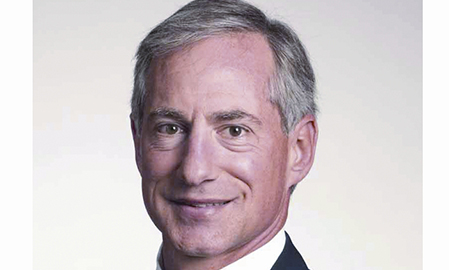Allowing copies of branded biologic medicines to share the original drug’s non-proprietary name will have little or no consequence for patient safety, despite strong resistance by innovator companies, most stakeholders and experts said yesterday during a workshop convened by the Federal Trade Commission.
Spending on biologic medicines is rising and is projected to soon match dollars spent on prescription pharmaceuticals. Biosimilars—essentially copies of those drugs—are one proposed solution to lowering healthcare costs.
Sharing the same name as innovators is seen as a market dam-opener for the me-too drugs. At issue is whether the FDA should be encouraged to stick to the existing naming policy for biologic copy cat medicines, or adopt distinguishing names.
When a small-molecule drug goes loses exclusivity, generic drug makers are usually free to share its WHO-established International Non-proprietary Name (INN). For instance, atorvastatin is the INN for Pfizer’s off-patent Lipitor.
Not adopting distinguishing names for biosimilars in place of the shared INNs now being used is risky, innovator companies said, as it can lead to confusion about drug origins when adverse reactions or product integrity problems are reported. However, these concerns were described by an ex-FDA expert as minimal in light of recent scientific advances in analytics.
That former FDA expert on biological analytics, Emily Schacter, told the Washington, DC, workshop “too much is being made” of small differences that are expected between highly similar biologics, because modern analytics have given industry and the agency powerful assurance that manufacturing changes will be clinically insignificant.
The workshop was driven by FTC concern about market competition issues raised by industry forces pushing legislation in various states to impede substitution of lower-cost biosimilars in place of innovator biologics, which presenters said cost up to $500,000 per patient per year.
Adding urgency to the debate is new legislation allowing FDA to approve new biosimilars on a shortened regulatory review pathway, and to designate among them “interchangeable” biosimilars that have automatic substitutability in the pharmacy. The first “interchangeable” designation earns as much as 42 months market exclusivity.
In addition to Schacter’s comments, workshop attendees heard anecdotal evidence of instances where such differences were not insignificant—experience in Europe with epoetin biosimilars to Janssen-Cilag’s Eprex subcutaneous anemia treatment causing pure red cell aplasia (PRCA) when the company replaced its human serum albumin stabilizer with polysorbate 80. The problem reverted when this change was reversed, but later came back and was found to be caused by the product’s use of uncoated rubber stoppers.
A similar problem occurred in Thailand in 2004-2007, where the practice of switching other erythropoietins was common and no one ever found which product caused the PRCA.
These experiences were cited by industry presenters at the workshop as a reason to require distinguishable INNs for all biologics, in addition to improving pharmacovigilance generally.
Several presenters, however, pointed out that Europe has had more extensive experience with biosimilars than the US since 2006, and no adverse experience reporting or pharmacovigilance problems have been experience there in that period.
The rising cost of original biologics in the US was portrayed as a reason for FTC to counter state legislation to encumber biologic prescriptions with prescriber-notification and patient-consent requirements, and to encourage FDA to stick to the single INN naming policy for biosimilars.
The notification requirements had been shown to reduce generic drug market “uptakes” in some states by as much as 80%, some presenters said.
In a statement, the Generic Pharmaceutical Industry Association said legislation that would hinder access to biosimilars and interchangeable biosimilars was introduced in 19 states in 2013, blocked in 11, enacted with significant amendments in three states, and enacted with Amgen- and Genentech-backed provisions intact in only one state (North Dakota).
“Biosimilars are the future of medicine,” the association said.
Express Scripts SVP and chief medical officer Steven Miller told the workshop that “specialty drugs” (about 75% of which are biologics) account for $300 billion of the pharmaceutical spend, or 30% of all expenditure.
Aetna’s VP/GM of specialty and home delivery pharmacy, Harry Travis, pegged it at even more than that. His company is spending 50% of all pharmacy money on specialty drugs, which are growing at a 15% annual clip compared with 5% for non-specialty.
The top drivers of this spending growth, he said, are new biologics, beneficiaries and price increases. The industry needs new tools to boost competition between suppliers, Travis opined.
Miller said that by 2018, about 4% of patients in the US will be consuming 50% of pharmaceutical spend and most of it for biologics.
Arguing against a separate naming convention for biologics, Miller seemed to speak for most when he said: “The reality is that the system FDA has created in the US is safe and effective. It is safe and effective for the biologic companies to use today and it will be safe and effective for the biosimilar companies to use in the future.”
Many of the 42 speakers at the workshop emphasized the biosimilars should not be expected to follow the regulatory and legal predicate established by generic drugs in the Waxman-Hatch Act, which balanced market exclusivity periods and shortened FDA reviews against patent protections for innovators.
The big US players in biosimilars listed by Bernstein Research senior analyst Ronny Gal included Novartis/Sandoz, Hospira/Celtrion, Pfizer, Actavis/Amgen, Boehringer Ingelheim and Mylan/Biocon, but he said they are not showing the price competitiveness that the marketplace is looking for.
Substitution barriers used by major innovator companies include volume-based rebates as much as 45-50% off list price for a contract supplying all of a plan’s patients for a year. This makes pre-launch bids from a biosimilar company very difficult, Gal said.







